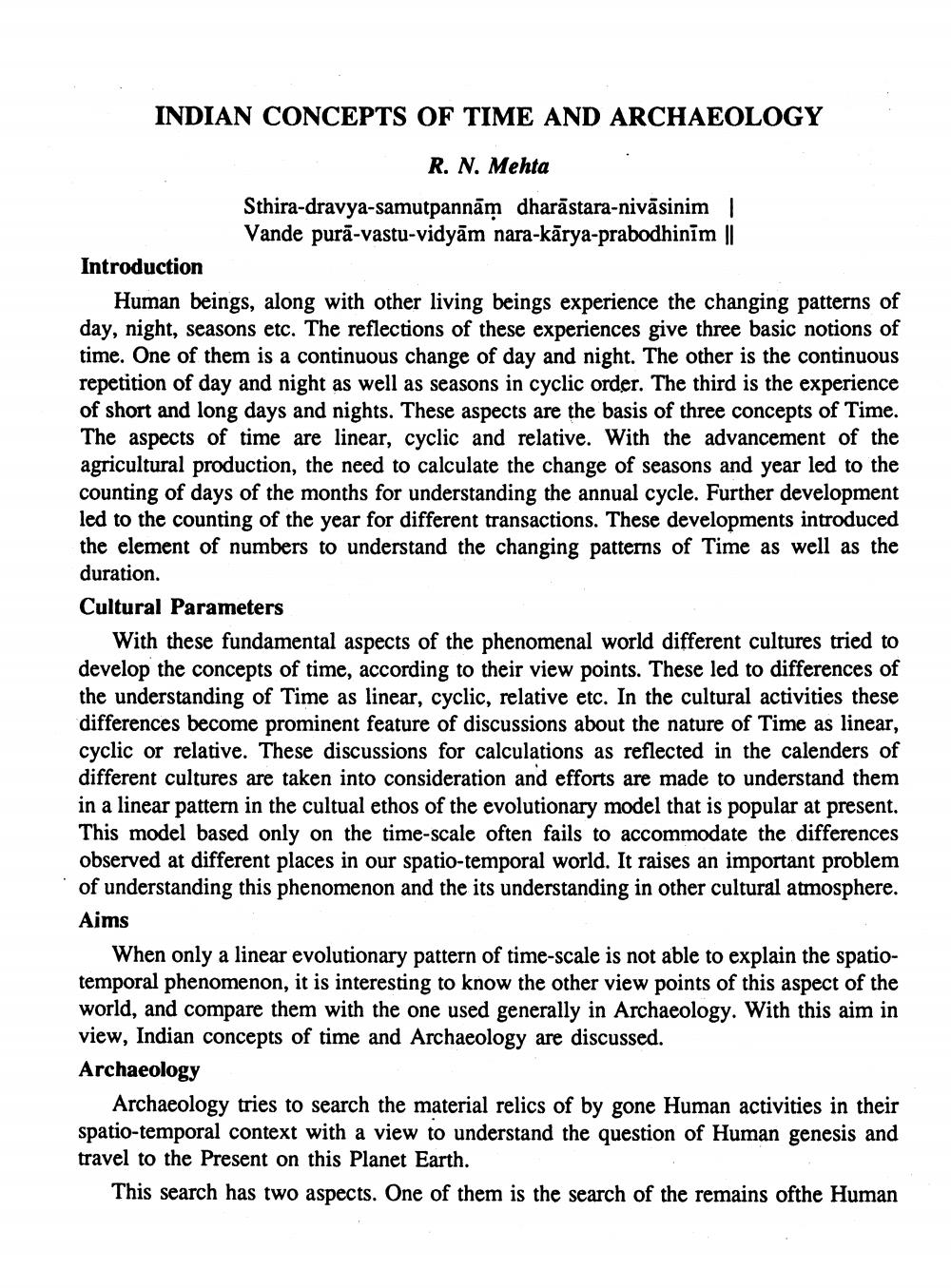________________
INDIAN CONCEPTS OF TIME AND ARCHAEOLOGY
R. N. Mehta
Sthira-dravya-samutpannām dharăstara-nivāsinim !
Vande pură-vastu-vidyām nara-kārya-prabodhinim || Introduction
Human beings, along with other living beings experience the changing patterns of day, night, seasons etc. The reflections of these experiences give three basic notions of time. One of them is a continuous change of day and night. The other is the continuous repetition of day and night as well as seasons in cyclic order. The third is the experience of short and long days and nights. These aspects are the basis of three concepts of Time. The aspects of time are linear, cyclic and relative. With the advancement of the agricultural production, the need to calculate the change of seasons and year led to the counting of days of the months for understanding the annual cycle. Further development led to the counting of the year for different transactions. These developments introduced the element of numbers to understand the changing patterns of Time as well as the duration. Cultural Parameters
With these fundamental aspects of the phenomenal world different cultures tried to develop the concepts of time, according to their view points. These led to differences of the understanding of Time as linear, cyclic, relative etc. In the cultural activities these differences become prominent feature of discussions about the nature of Time as linear, cyclic or relative. These discussions for calculations as reflected in the calenders of different cultures are taken into consideration and efforts are made to understand them in a linear pattern in the cultual ethos of the evolutionary model that is popular at present. This model based only on the time-scale often fails to accommodate the differences observed at different places in our spatio-temporal world. It raises an important problem of understanding this phenomenon and the its understanding in other cultural atmosphere. Aims
When only a linear evolutionary pattern of time-scale is not able to explain the spatiotemporal phenomenon, it is interesting to know the other view points of this aspect of the world, and compare them with the one used generally in Archaeology. With this aim in view, Indian concepts of time and Archaeology are discussed. Archaeology
Archaeology tries to search the material relics of by gone Human activities in their spatio-temporal context with a view to understand the question of Human genesis and travel to the Present on this Planet Earth.
This search has two aspects. One of them is the search of the remains ofthe Human




